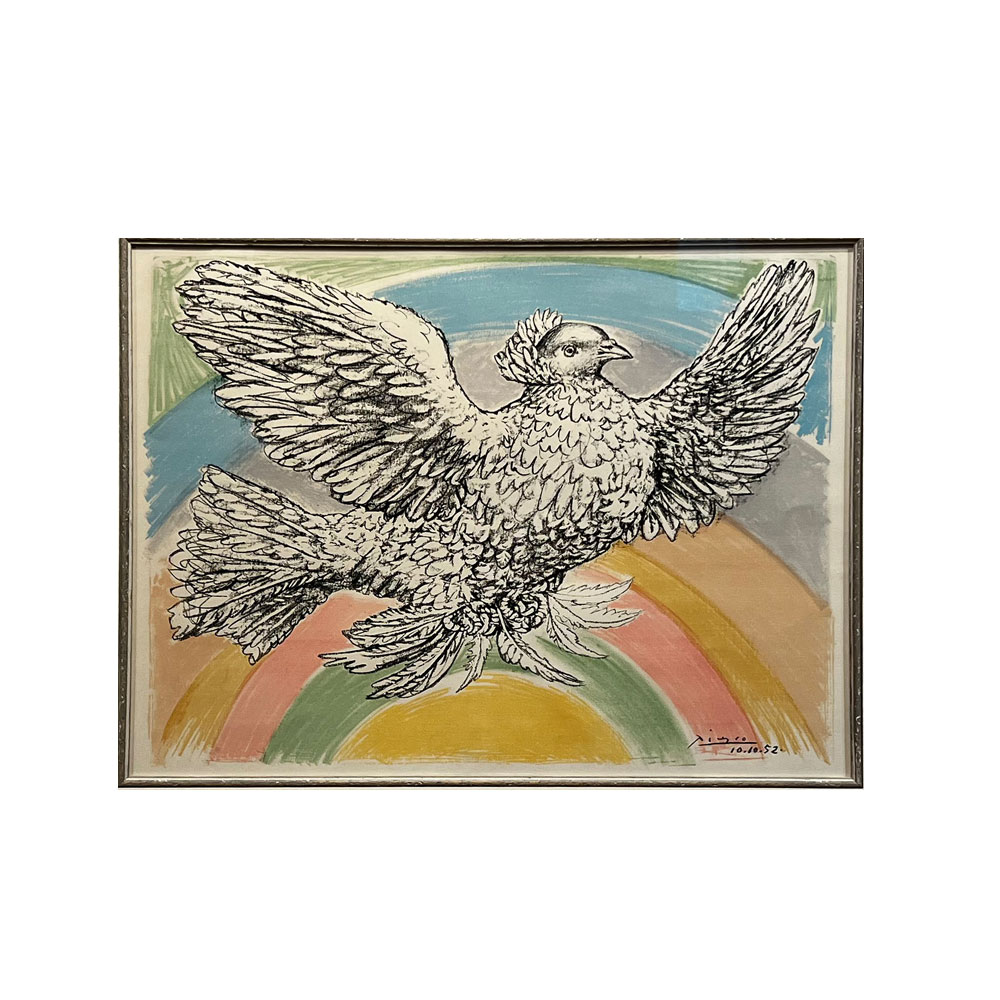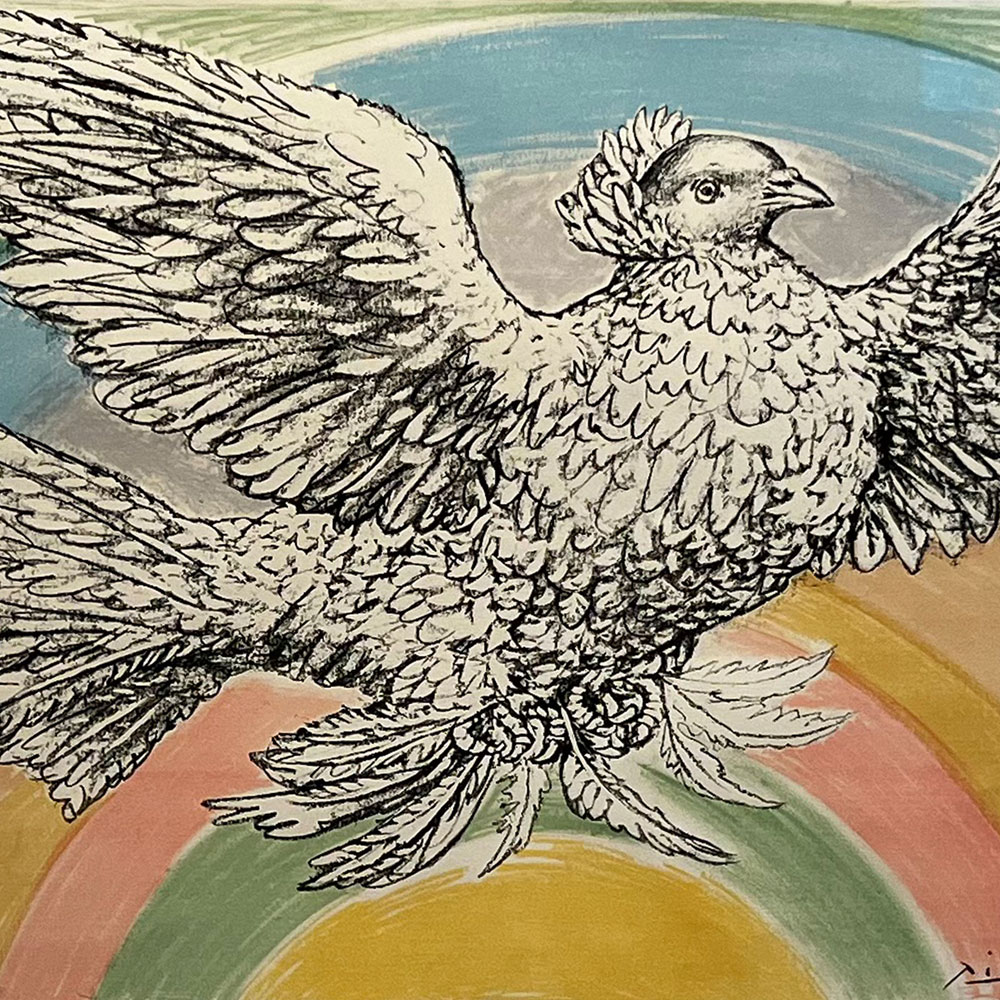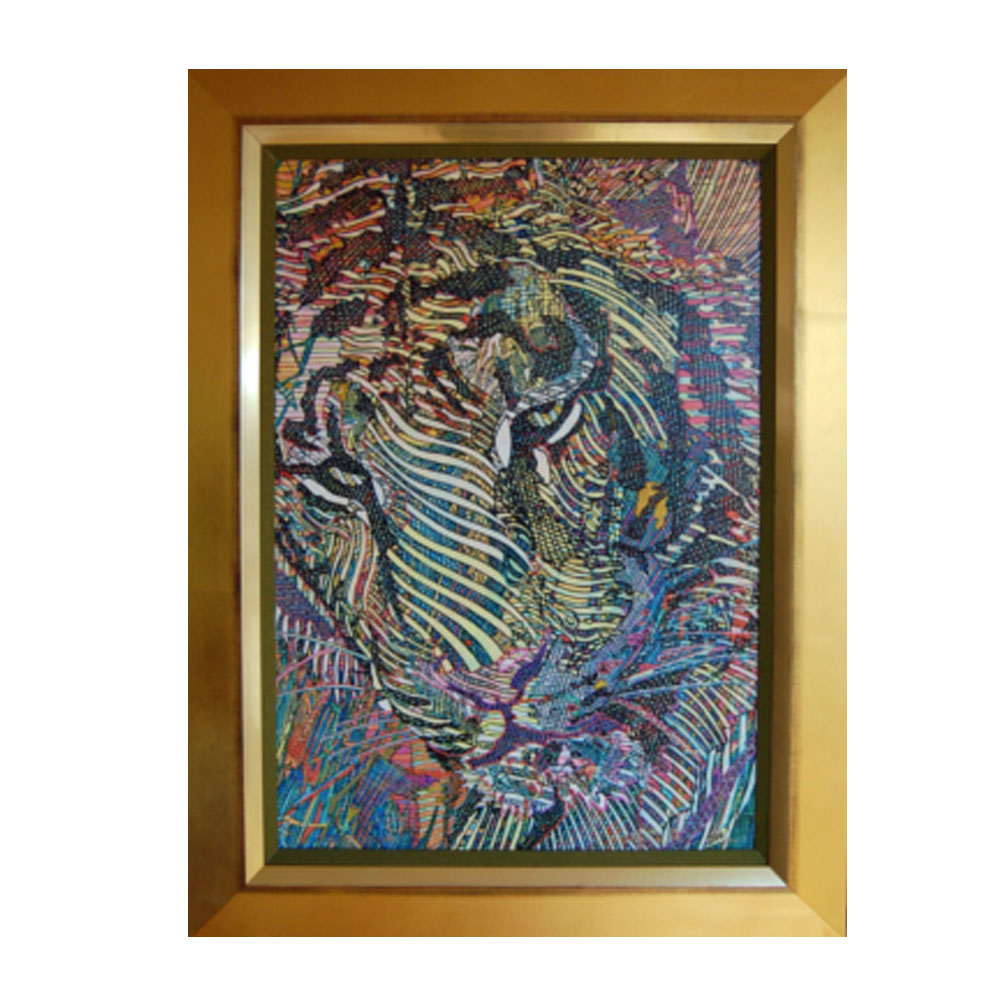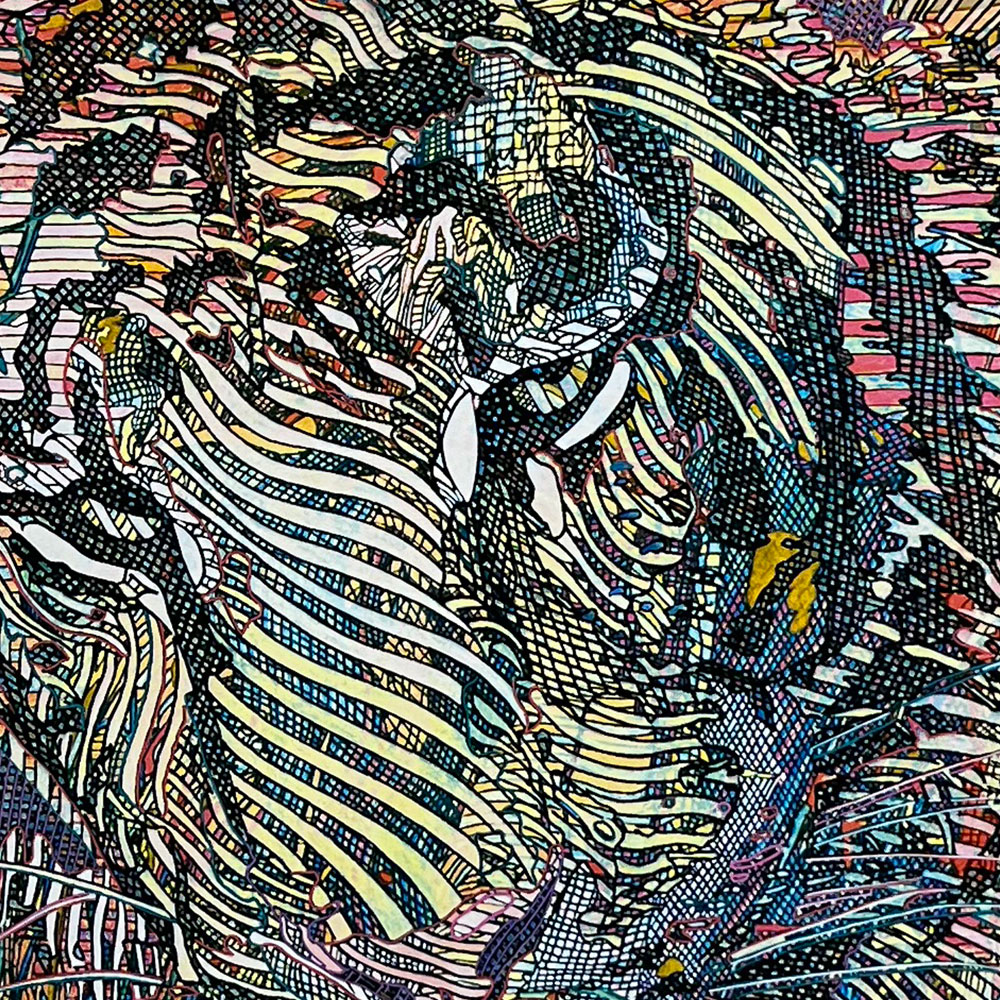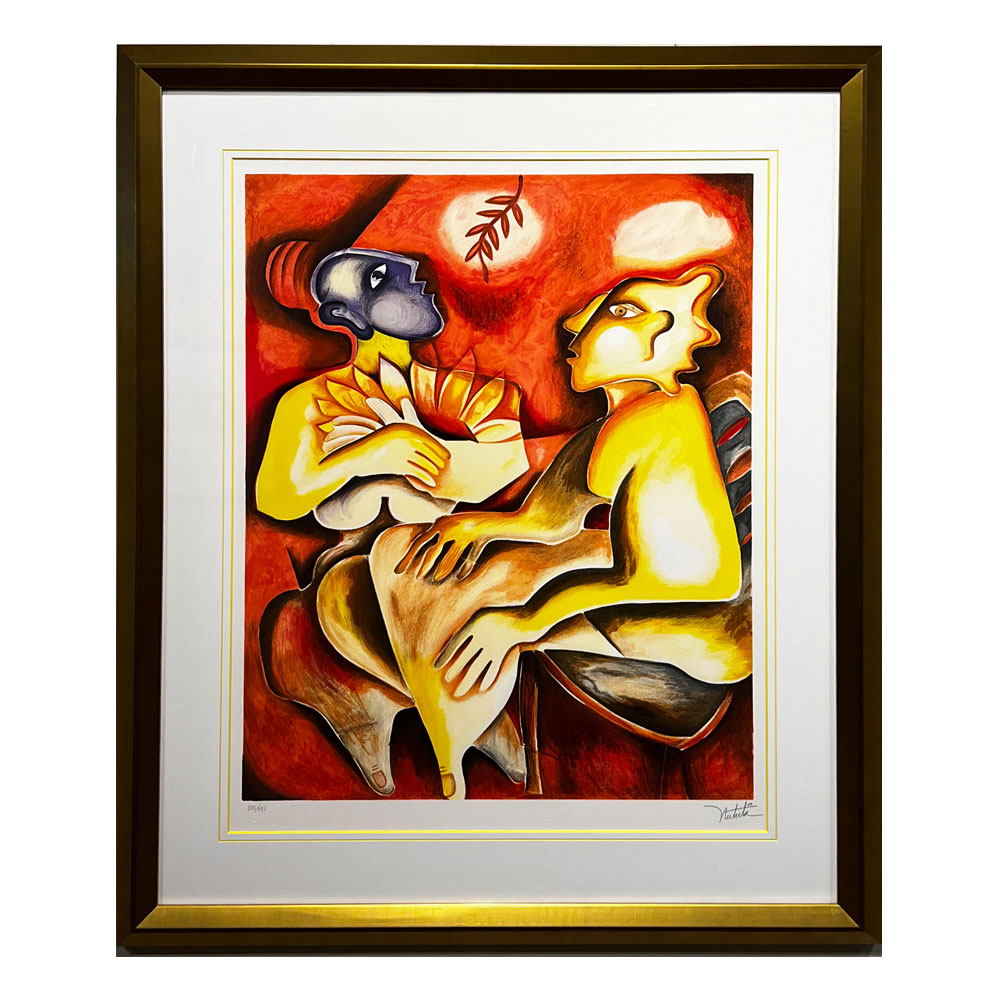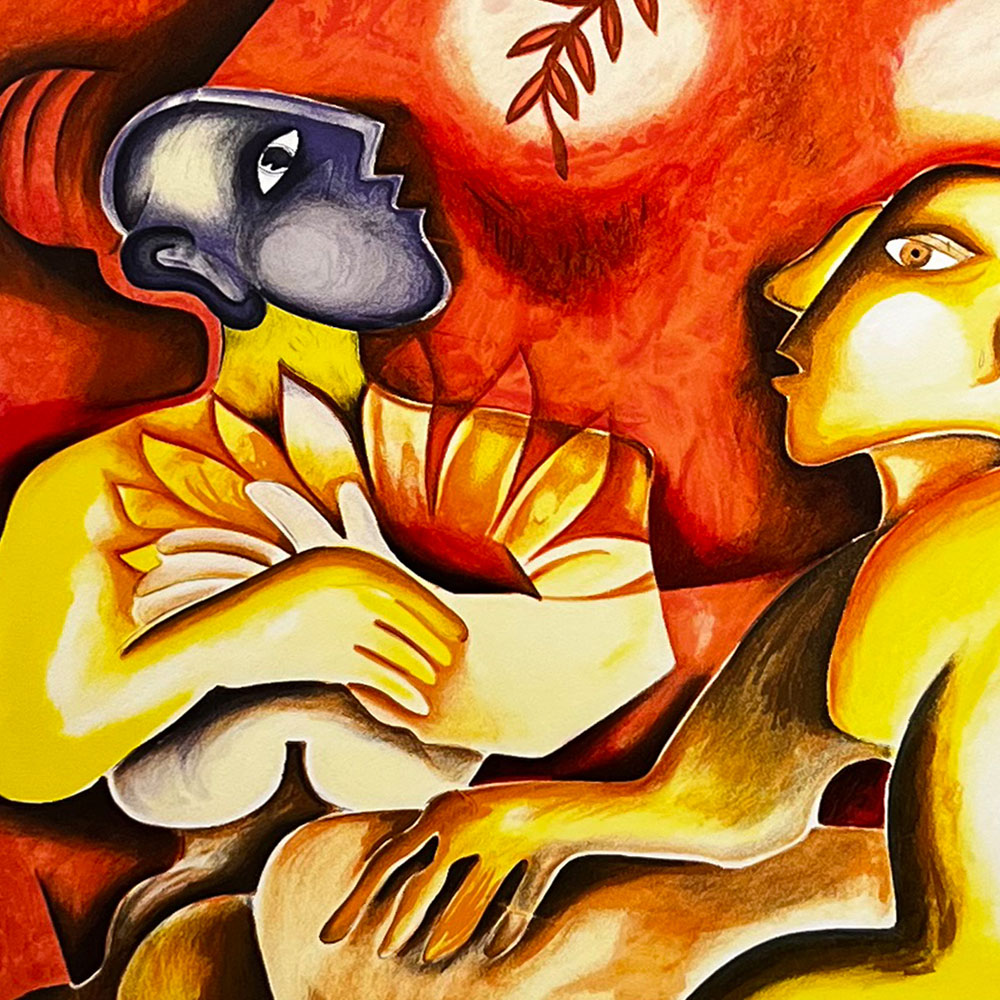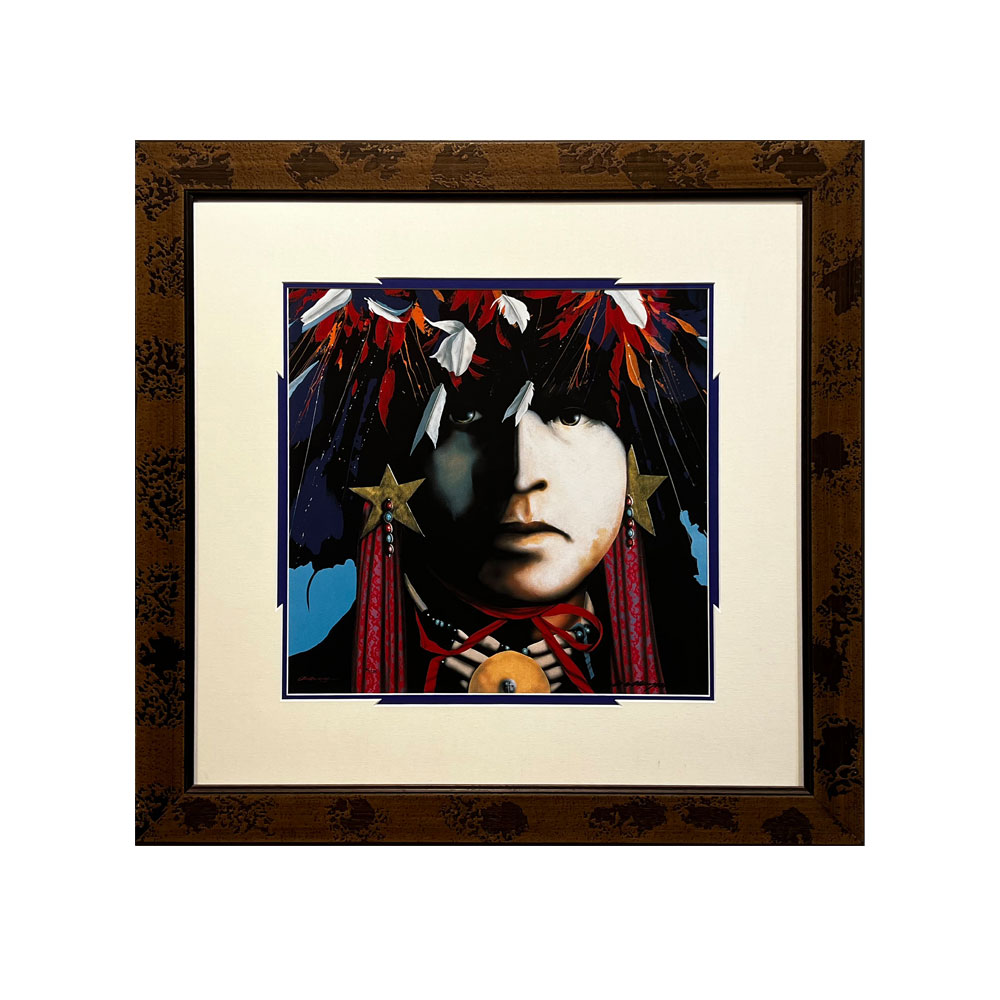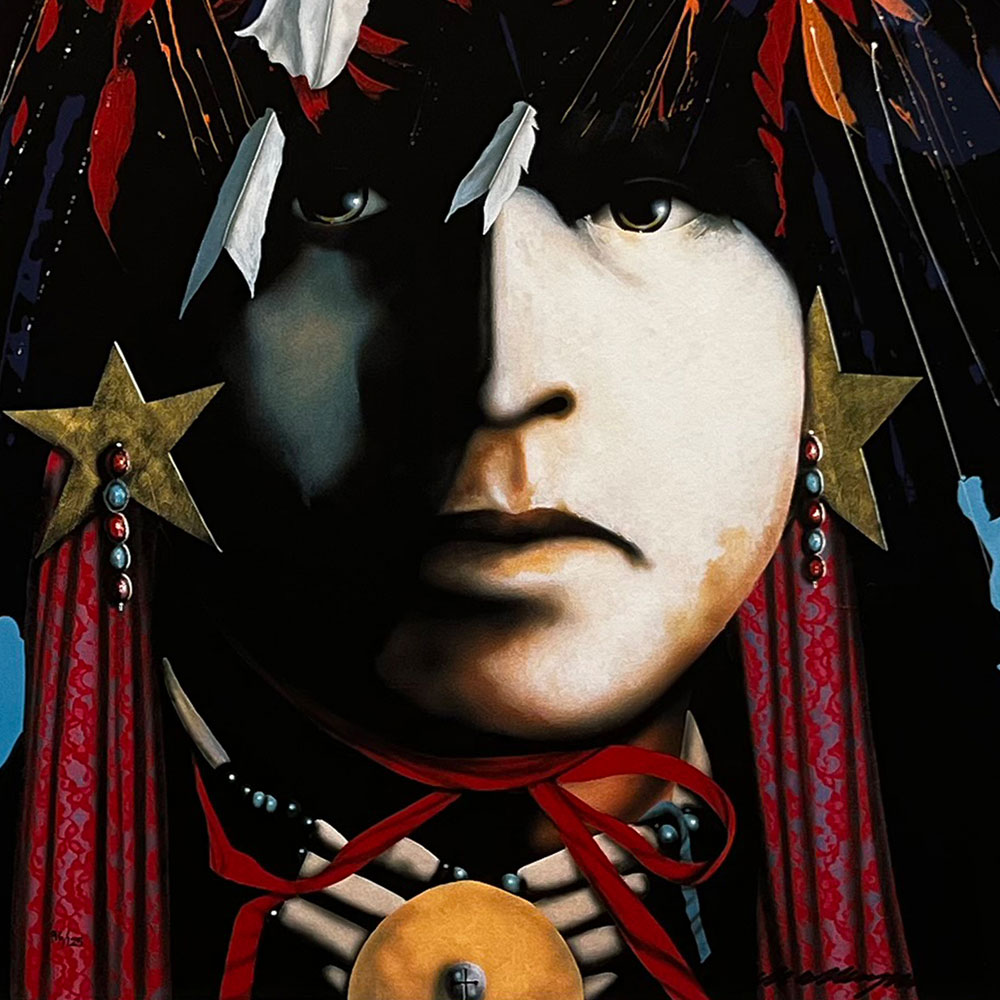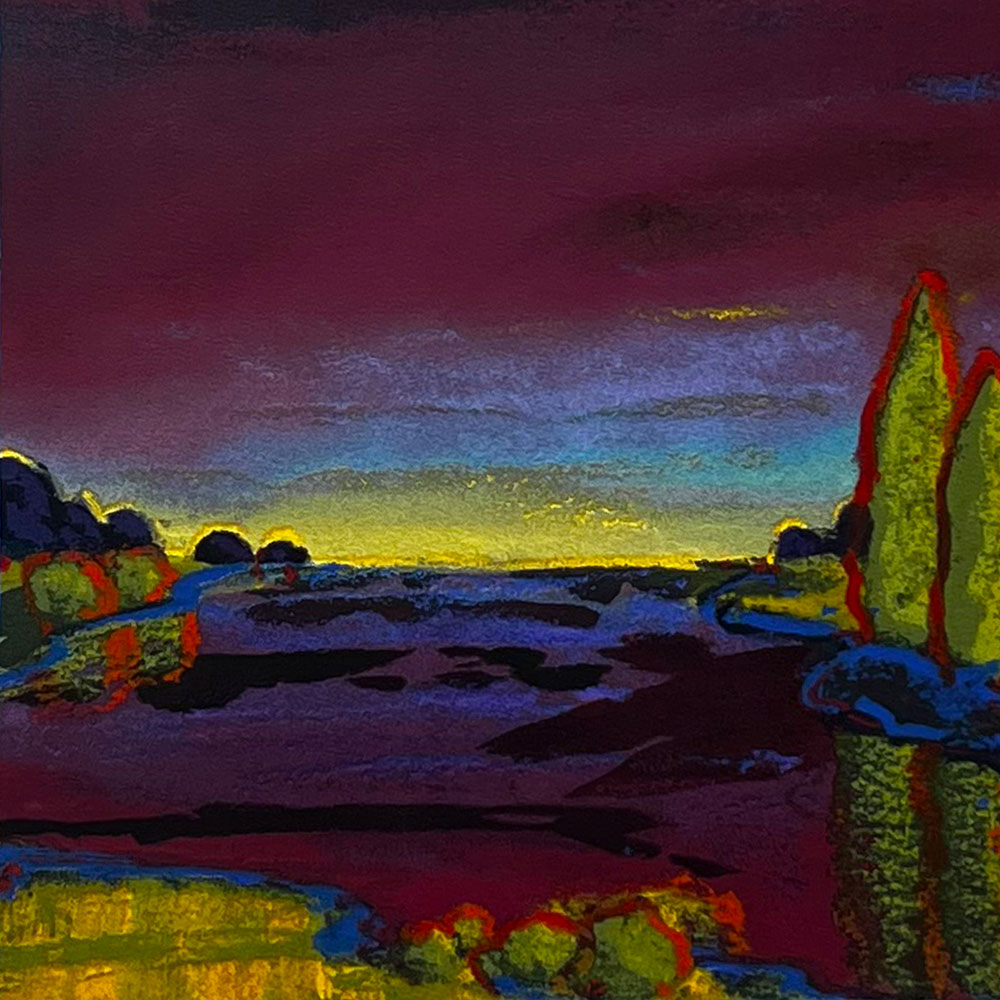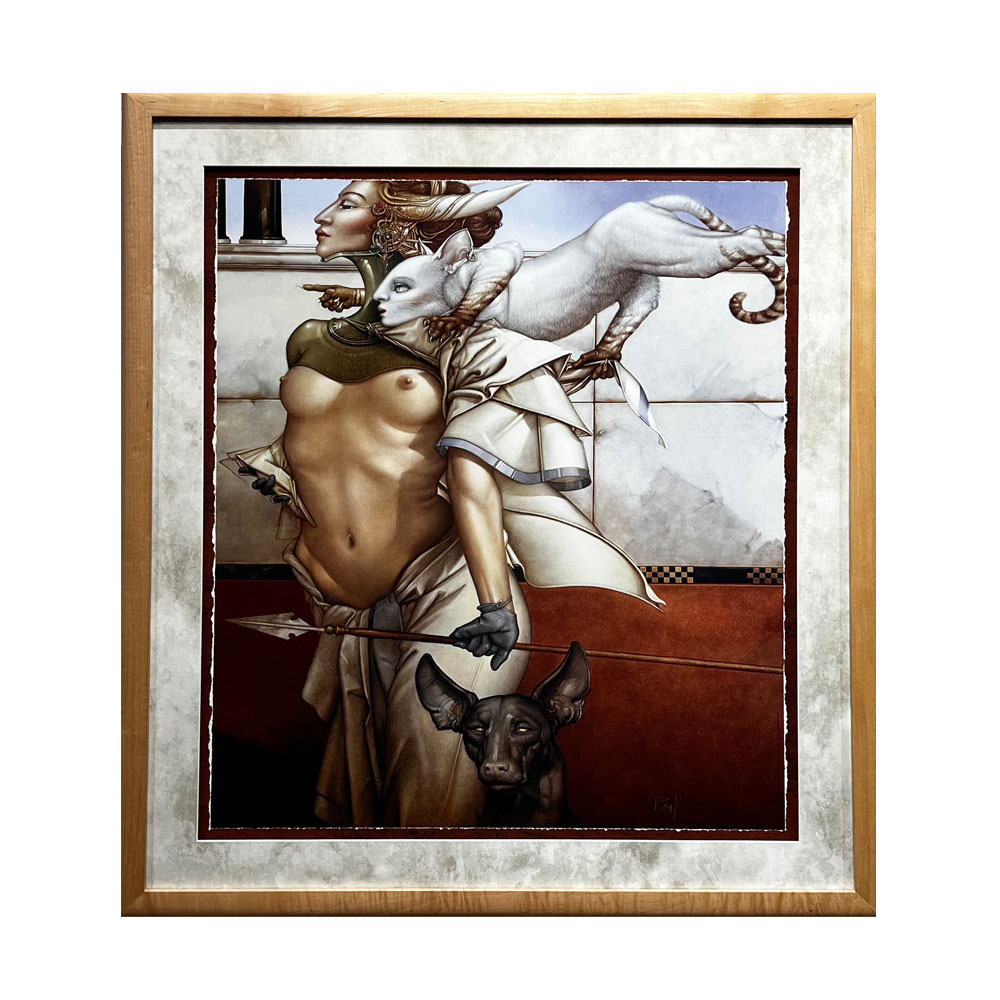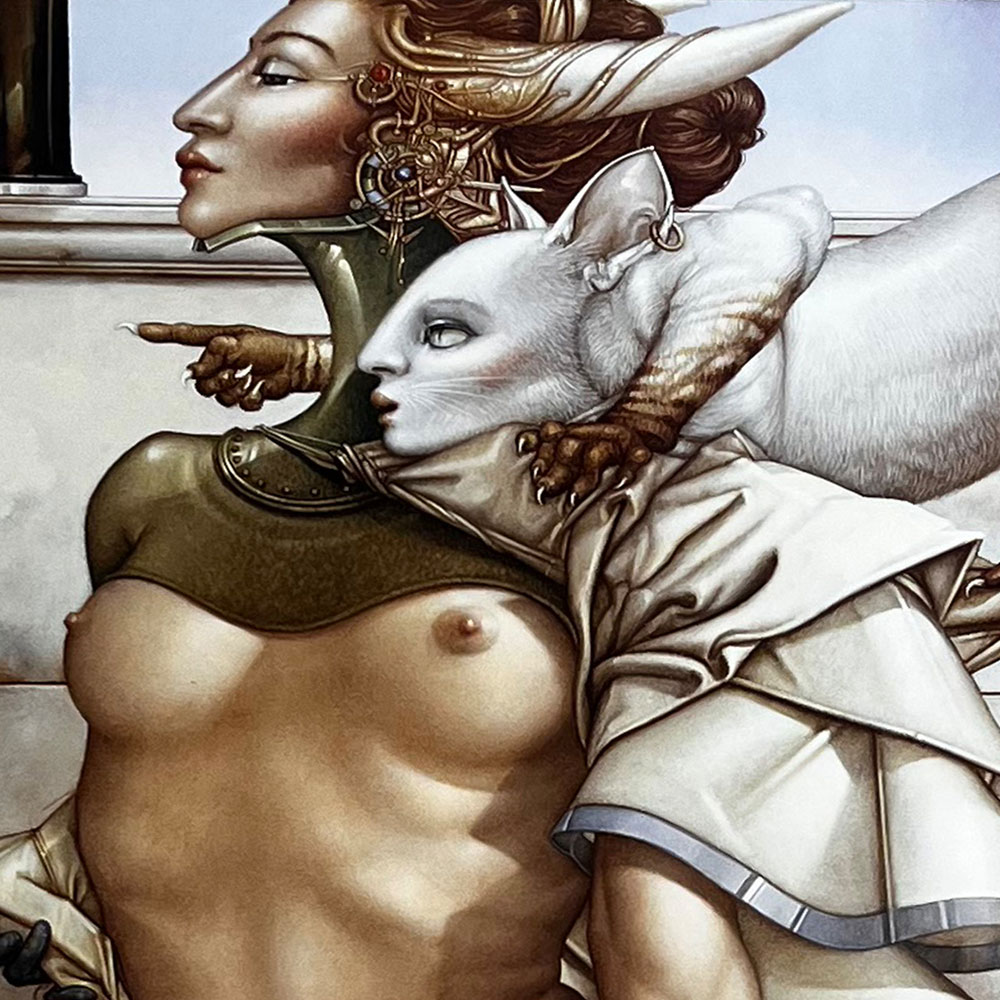Description
Pablo Picasso (Spanish, 1881 – 1973)
Who Was Pablo Picasso?
Robert Doisneau, Les pains de Picasso (1952).
“Are we to paint what’s on the face, what’s inside the face, or what’s behind it?”
In the eyes of many, Pablo Picasso is one of the most important, prolific artists of the 20th century. When he died, he left behind over 45,000 works, leading The Museum of Modern Art to sometimes be referred to as “The House that Pablo Built” as they have exhibited so much of his oeuvre. A womanizer and an eccentric, Picasso was known for his mercurial moods and passionate outbursts, possessing an electrifying presence that ensnared all who met him. It was this energy and these tumultuous emotions that led him to found one of the most influential aesthetic developments of all time: Cubism. Throughout his career, the Spanish artist’s radical use of form and perspective reshaped art as we know it.
Picasso was born Pablo Diego José Francisco de Paula Juan Nepomuceno María de los Remedios Cipriano de la Santísima Trinidad Ruiz y Picasso in Malaga, Spain on October 25, 1881 to a creative family, which included his mother Maria, father Jose, and younger siblings Lola and Conchita. Jose was a painter and eagerly helped his son, encouraging him to formally study art when he was just 11 years old. Picasso then went on to study art in both Madrid and Barcelona. A true prodigy, he later boasted that “when I was a child, my mother said to me, ‘If you become a soldier, you’ll be a general. If you become a monk, you’ll end up as the Pope.’ Instead, I became a painter and wound up as Picasso.”
Young Pablo’s earlier paintings were layered with religious themes, a result of the atheistic worldview he adopted when Conchita succumbed to diphtheria at the age seven. It was not until his family moved to Barcelona that the artist truly began to discover his own voice: At the Els Quatre Gats (The Four Cats) café, surrounded by bohemian artists, poets, and writers, Picasso flourished as he encountered ideas and ideologies similar to his own. Inspired by the writings of Friedrich Nietzsche and the paintings of Edvard Munch and Henri de Toulouse-Lautrec, he set off to travel and further his artistic experience, living between Madrid and Paris up until 1904.
Pablo Picasso, Portrait d’Angel Fernández de Soto (1903).
Blue Period (1901–1904) Picasso’s time spent in France, however, was quickly marred by an artistic depression. Dreary hues of blue and gray weaved their way into his paintings, forming desolate beggars and emaciated prostitutes. Referred to by scholars as his “Blue Period,” it is believed that this dark turn materialized after the suicide of Carlos Casegemas, a Catalan artist Picasso befriended in his early days at Els Quatre Gats. In his angst, the artist wandered the streets of Barcelona and Paris, documenting poverty in a distorted, warped way to mark the grim nature of what he saw. One of his most well-known works, The Old Guitarist (1903–1904), depicts a frail elderly man hunched down on a street, his clothes torn and expression melancholy as he strums at his guitar. He appears to be in distress, every aspect of his posture signaling defeat. Perhaps this is a mirror for how Picasso felt at the time, but, soon enough, his blue spell would warm and the grays and blues merged into soft reds and pinks.
Pablo Picasso, Garçon à la collerette (1905).
The Rose Period (1904–1906) After settling into the artist’s quarter of Paris known as the Bateau-Lavoir, Picasso’s work adopted a more positive outlook. Gone were the dreary beggars bathed in blue, and in their place were street performers and clowns rendered in shades of pastel reds. His change of heart can partly be attributed to the Stein siblings, Gertrude and Leo, famous patrons who supported their so-called “School of Paris,” of which Henri Matisse was also a member. It was at the Stein’s lively salons that Picasso first became acquainted with Primitivism and tribal art, the rawness of which fascinated and inspired him. His iconic portrait of Gertrude Stein reflects these newfound interests, where the mask-like appearance of her face and the angular manner in which she is composed are hallmarks of the impending Cubism movement. Indeed, Gertrude Stein (1905–1906) resembles one of his most famous works, Les Desmoiselles d’Avignon (1907), a Proto-Cubist painting that shocked the art world with its primal sexuality and broken, geometric composition.
Many scholars attribute Picasso’s stylistic shifts to the presence of his various female companions. For each of the women Picasso brought into his life and bed, the figures in his art were visibly reinvented. During the Rose Period, his lover Fernande Olivier, girlfriend Marie-Thérèse Walter, and first wife Olga Khoklova all make frequent appearances, and the happy painted atmosphere reflects the joy of their early romances. When Picasso’s pictures became darker, it is evident that his relationships were suffering: In Sleeping Woman (1904), Fernande sleeps peacefully while he sits awake, anxious. Not long after the painting was completed, Picasso shifted his affections to the young Marcelle Humbert (later renamed Eva) and left Fernande abruptly—a common practice in his love life. Almost instantaneously, his paintings grew warm again.
Pablo Picasso, Partition, guitare, compotier (1924).
Cubism (1907–1925) As Picasso established himself as an important artistic force among the Parisian avant-garde, Cubism would prove to be one of his most significant contributions to the medium of painting. Attributed to both Picasso and his contemporary Georges Braque, the movement’s name was coined by the French critic Louis Vauxcelles. The goal of Cubism was to capture multiple angles of an object at the same time by breaking it down into visually separate planes. This represented a shocking disruption of the European canon, which had for so long stuck to Renaissance ideals of painting reality from a fixed viewpoint.
Though many suggest Cubism first emerged with Les Demoiselles in 1907, it was not until 1912 that Picasso made the complete leap, using layered planes and representational shapes to create a fractured, holistic perspective. He cast aside the conventional notion that a painting is a “window” of the world—he did famously say “everything you can imagine is real,” after all—instead choosing more abstract imagery, and his partnership with Braque led to even further explorations of the new Cubist aesthetic. The two not only developed Analytic Cubism (the early stage of the movement) but also Synthetic Cubism, derived from the papier collé technique of collage. A prime example is Bottle and Wine Glass on Table (1912), which utilized pasted newsprint and paper on canvas to create a nuanced still life.
Ironically, Picasso rejected the label of Cubism, though it indisputably is what makes him a household name. He preferred to think of his work as a continuum, and not something to be categorized into various periods and movements.
Pablo Picasso, Mère et Enfant (1921).
Neoclassical Period (1920–1930) With his Cubist aesthetic firmly established, Picasso began to experiment with Neoclassical imagery in the years following World War I. Mythological figures began to populate his canvases, including centaurs, nymphs, fauns, and classically dressed women. After Olga gave birth to his first child, Paulo, the artist’s depictions of Grecian women increased dramatically. Scores of paintings were made dedicated to the ideal of motherhood, featuring women in white togas that were calm and maternal in their disposition.
Yet as the 1920s came to a close, Picasso’s work shifted again, this time emulating a Symbolist ideology. His pieces became both erotic and violent, with distorted, monstrous people as the central focus. His wife, once the subject of adoring portraits, became a frightening subject, a clear marker that he was bored with her and more preoccupied with the temptations of his mistresses. She soon was out of the picture entirely, with Marie-Thérèse and a photographer named Dora Maar the new focus of his desire. His darkness quickly consumed them as well, as Marie-Thérèse was dismissed shortly after she gave birth to their daughter Maya, and Dora suffered an emotional breakdown after Picasso allegedly beat her and pitted the two women against each other. Years later, he would paint Maar’s fragile state in the portrait The Weeping Woman (1937), which chillingly demonstrates the angst his companions suffered. As the artist allegedly said that “there are only two types of women—goddesses and doormats,” it’s perhaps not surprising that he so easily transitioned between love and hate.
David Douglas Duncan, Jacqueline in front of Guernica (1960).
Spanish Civil War As time lapsed into the 1930s, the darkness evident in Picasso’s Surrealist-inspired aesthetic only intensified, particularly during the Spanish Civil War. In 1936, he was living in France when he heard of the bombing of Guernica, a small village in northern Spain. Generalissimo Francisco Franco, leader of the fascist coup, selected the Basque town as target practice for Hitler’s war machine, raining bombs down upon civilians for three hours. 1,600 people were killed or wounded—most of them women and children—and the atrocity shocked the world. Furious at the massacre, Picasso created the monumental Guernica (1937), one of his greatest masterpieces and most famous work to date.
Incensed by the bloodshed, he filled the grim, gray-and-black canvas with somber images of anti-war symbolism. People are tangled within each other, screaming and collapsed on the ground. A woman holds a dead child, weeping, and an ominous bright white light emanates from the top of the painting. Guernica initially received mixed reviews, as some saw it as callous, while others believed Picasso hadn’t emphasized the bloodshed enough. Franco himself exiled the artist when he defeated the Republican Government of Spain, forcing him to return to France and live out the remainder of his life there. Years later, Guernica would become a banner for Spain’s path to democracy, celebrated as they escaped their fascist system.
Pablo Picasso, Femmes aux mains jointes.
Later Life Throughout the 1940s And 1960s, Picasso continued to paint at an impressive rate, and also delved further into other media such as sculpture, ceramics, and printmaking. As a sculptor he was self-taught, employing a variety of found objects to construct playful figures that closely resembled his painted works. His masterful She-Goat (1950) features a wicker basket as the animal’s torso and milk jugs as its udders.
As an artist, he had achieved an unprecedented level of international acclaim and mainstream popularity. He was the subject of countless news articles and television interviews, with regular exhibitions in London and Paris as well as a massive MoMA retrospective in 1957. The 2010 MET exhibit, “Picasso in the Metropolitan Museum of Art,” showed 300 Picasso works to over 700,000 visitors in 17 weeks, making it the most highly attended show since 2001. There are even museums dedicated solely to his work—eight total, in fact— including the Musée Picasso in Paris and the Musée Picasso in Antibes.
Picasso also garnered substantial financial success both during his career and post-mortem. At the time of his death, his net worth was between $100–250 million, and the legacy of his wealth grows exponentially to this day. His oeuvre has been sold at astonishingly high prices; in June 2016, Femme Assise (1909) sold at Sotheby’s for $63.5 million, and in May 2015, Les Femmes d’Alger (Version ‘O’) (1955) sold for a record-shattering $179.4 million, becoming the most expensive painting sold at an auction to date.
Picasso died on April 8, 1973 at his home in Mougins, France at the age of 91, having worked right up until the very end of his life. His last works, in their loose, colorful brilliance, bear an unmistakable resemblance to the innocence of children’s drawings. After all, the artist himself had once remarked that “every child is an artist. The problem is how to remain an artist once we grow up.”
His singular career would influence every subsequent generation of artists, ranging from painters Jasper Johns and Cecily Brown to musician Jay Z in his song “Picasso Baby.” To this day, Picasso remains one of the most loved artists of our time.


